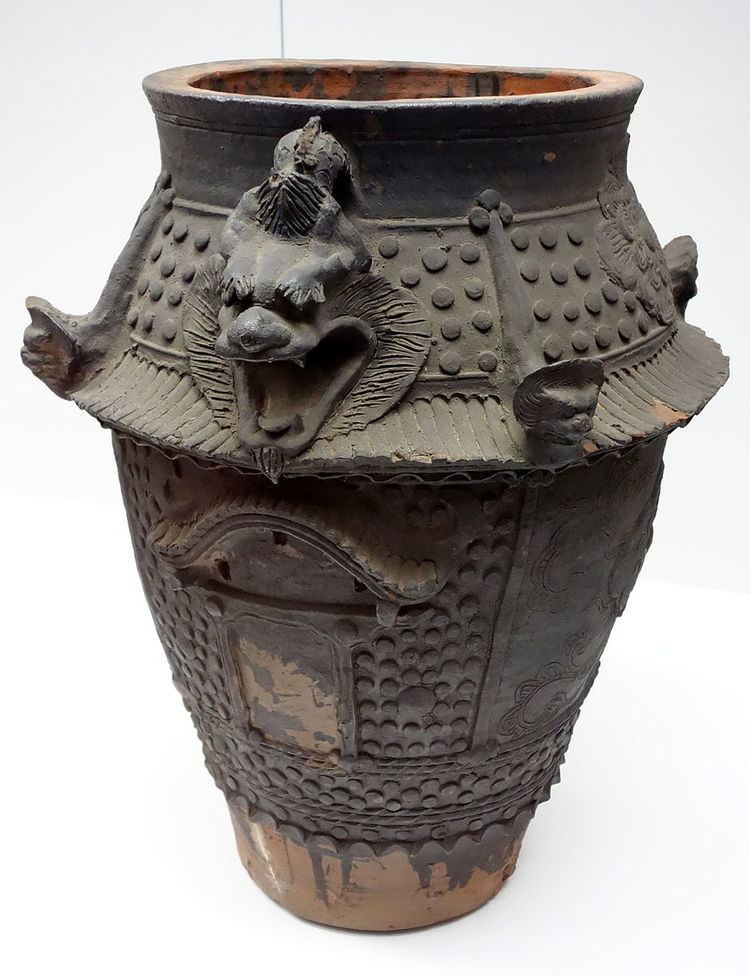 | ||
Ryukyuan pottery (琉球焼, or Okinawan language: 焼物 ; Yachimun) include earthenware and stoneware items that are traditionally made on the Ryukyu Islands of Japan.
History
Ryukyuan pottery first appeared during the Gusuku period (c. 1100s-1400s), when it was introduced from China.
Tsuboya became the centre of production in 1682 after the kilns of Chibana, Wakuta, and Takaraguchi were consolidated under the Ryukyu Kingdom government. The two sub-types of Tsuboya ware were the generally unglazed Ara-yachi and the glazed Jō-yachi.
Most of the kilns had to move out of Tsuboya after the end of the Pacific War due to the smoke they produced. Production moved to the villages of Yomitan (読谷村) and Ōgimi (大宜味村) and they continued the tradition of Yachimun.
In addition to dishes, vessels, and roof tiles, Ryukyuan pottery is especially known for the production of funerary urns, and shisa, lion-like guardians placed on rooftops and at gates to protect homes and other spaces from evil spirits.
